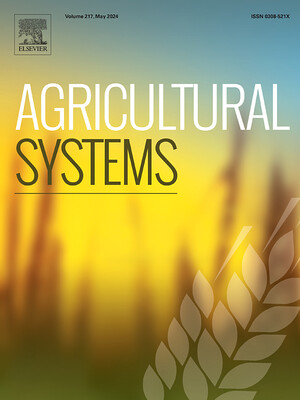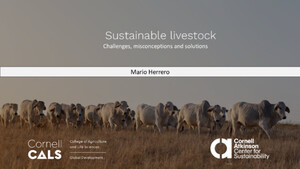
Invited review: Current enteric methane mitigation options
Abstract
Ruminant livestock are an important source of anthropogenic methane (CH4). Decreasing the emissions of enteric CH4 from ruminant production is strategic to limit the global temperature increase to 1.5°C by 2050. Research in the area of enteric CH4 mitigation has grown exponentially in the last 2 decades, with various strategies for enteric CH4 abatement being investigated: production intensification, dietary manipulation (including supplementation and processing of concentrates and lipids, and management of forage and pastures), rumen manipulation (supplementation of ionophores, 3-nitrooxypropanol, macroalgae, alternative electron acceptors, and phytochemicals), and selection of low-CH4-producing animals. Other enteric CH4 mitigation strategies are at earlier stages of research but rapidly developing. Herein, we discuss and analyze the current status of available enteric CH4 mitigation strategies with an emphasis on opportunities and barriers to their implementation in confined and partial grazing production systems, and in extensive and fully grazing production systems. For each enteric CH4 mitigation strategy, we discuss its effectiveness to decrease total CH4 emissions and emissions on a per animal product basis, safety issues, impacts on the emissions of other greenhouse gases, as well as other economic, regulatory, and societal aspects that are key to implementation. Most research has been conducted with confined animals, and considerably more research is needed to develop, adapt, and evaluate antimethanogenic strategies for grazing systems. In general, few options are currently available for extensive production systems without feed supplementation. Continuous research and development are needed to develop enteric CH4 mitigation strategies that are locally applicable. Information is needed to calculate carbon footprints of interventions on a regional basis to evaluate the impact of mitigation strategies on net greenhouse gas emissions. Economically affordable enteric CH4 mitigation solutions are urgently needed. Successful implementation of safe and effective antimethanogenic strategies will also require delivery mechanisms and adequate technical support for producers, as well as consumer involvement and acceptance. The most appropriate metrics should be used in quantifying the overall climate outcomes associated with mitigation of enteric CH4 emissions. A holistic approach is required, and buy-in is needed at all levels of the supply chain.
Citation
Beauchemin, K.A., Ungerfeld, E.M., Abdalla, A.L., Alvarez, C., Arndt, C., Becquet, P., Benchaar, C., Berndt, A., Mauricio, R.M., McAllister, T.A., Oyhantçabal, W., Salami, S.A., Shalloo, L., Sun, Y., Tri-carico, J., Uwizeye, A., De Camillis, C., Bernoux, M., Robinson, T. and Kebreab, E. 2022. Invited re-view: Current enteric methane mitigation options. Journal of Dairy Science 105(12):9297-9326.










